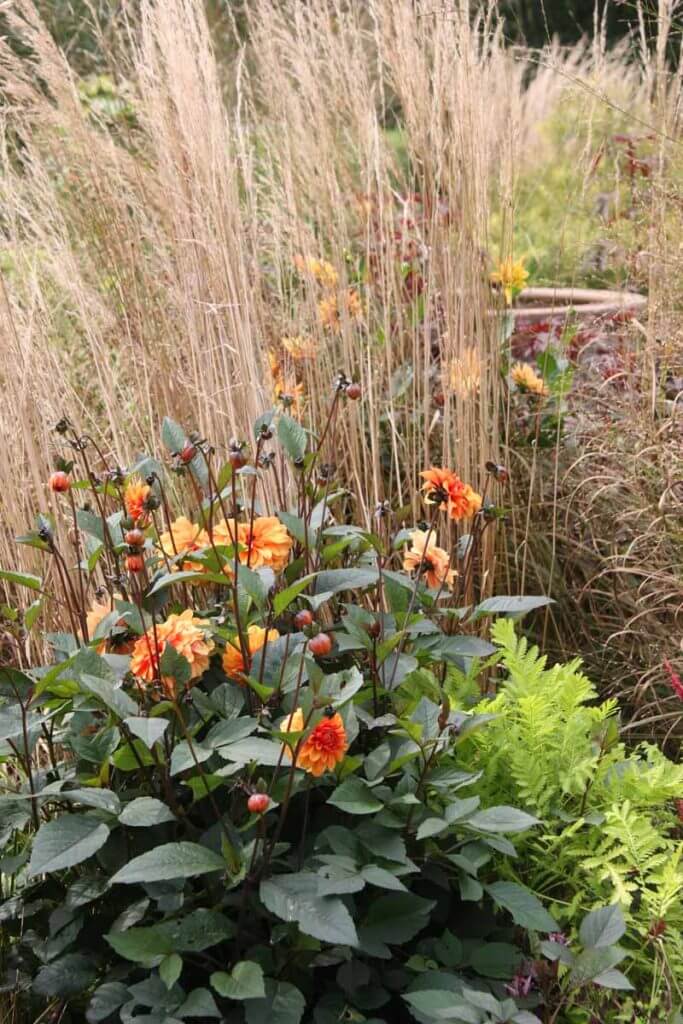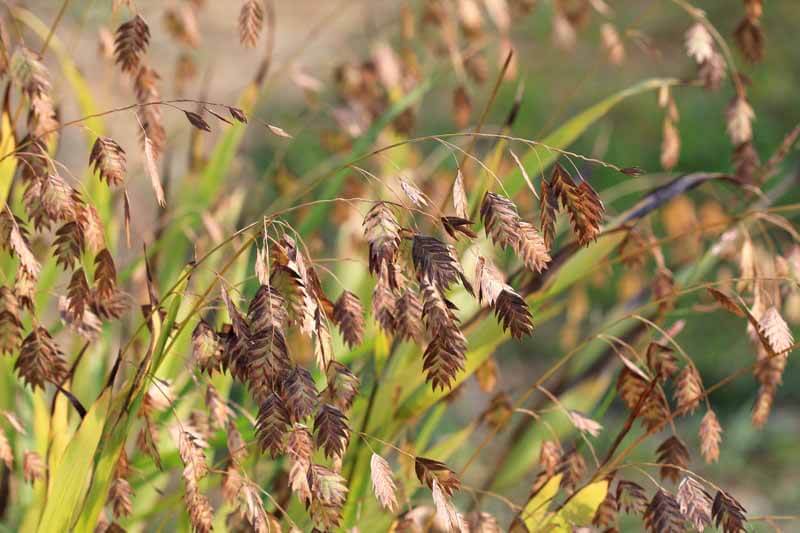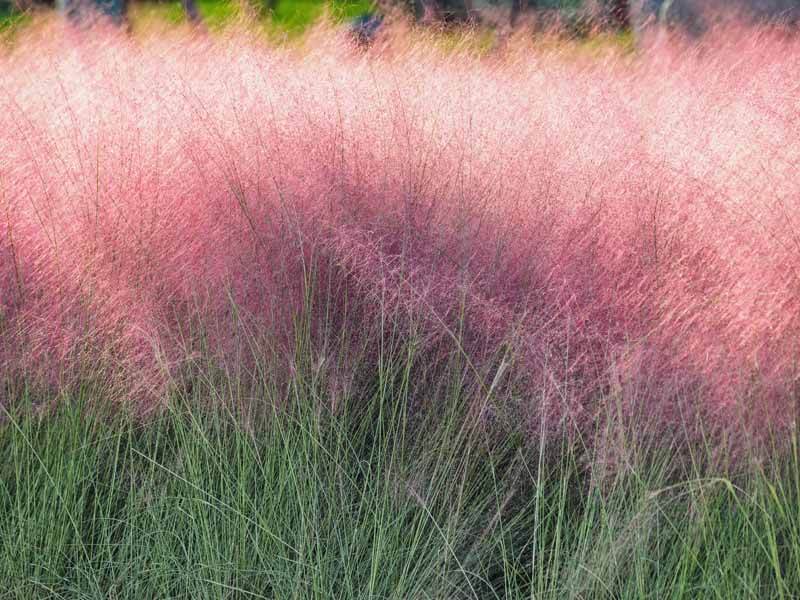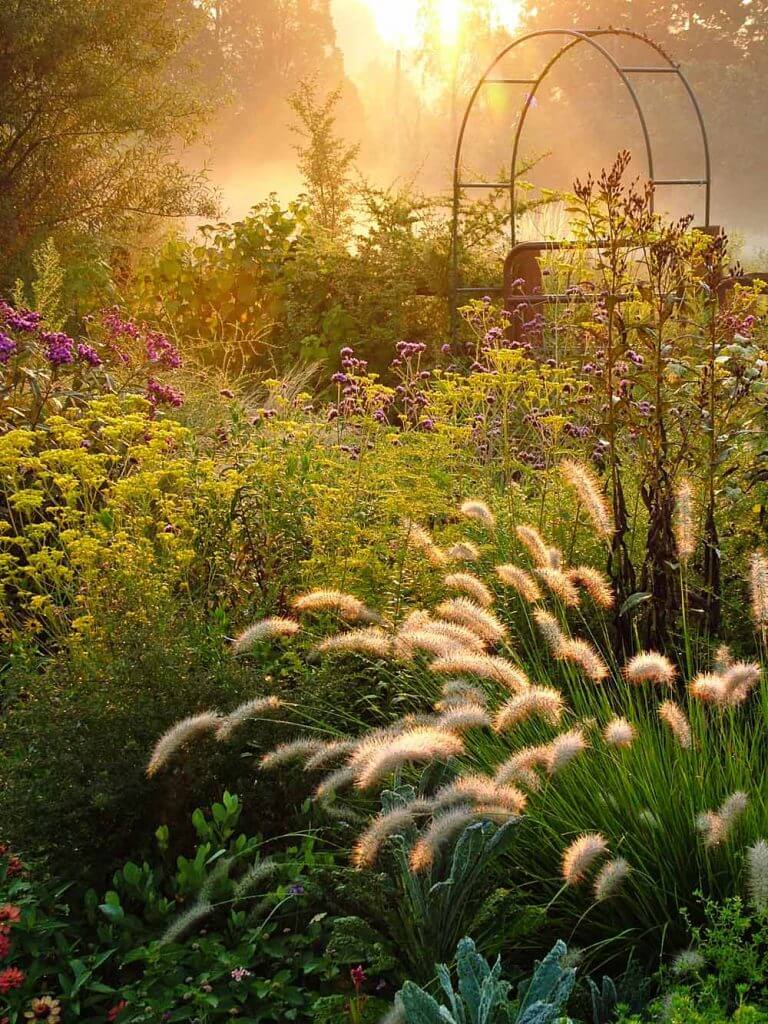

Back in the 1970s and ‘80s, pioneering garden designers like Wolfgang Oehme, James van Sweden and Piet Oudolf sparked an interest in garden grasses. That spark turned into a wildfire of bold, ornamental garden grasses, and now they can be found in public and private gardens all over the world.
These stars of the informal gardens shine because they are low maintenance, high impact plants that create drama in the landscape throughout the seasons. Home gardeners are spoiled for choice when it comes to grasses. The following are some of the best for hardiness, ease of care, and beauty.
Great Fall Grasses

Feather reed grass (Calamagrostis x acutiflora ‘Karl Foerster’) is an upright grass so tough that it will even succeed in an area with air pollution, clay soil, and nearby black walnut trees. The popular variety ‘Karl Foerster’ is of medium height (3-5 feet tall and about half as wide) with vertical green spikes that terminate into “feathers” that give the grass its common name. These feathers give rise to pinkish-purple flowers followed by golden seedheads. Feather reed grass stalks also make excellent dried flowers and the plants turn a pleasing brown in fall.
Though feather reed grass tolerates adverse conditions, it prefers soil with average moisture and full to partial sun. Happy plants will form dense clumps, so position them accordingly in the garden. Expect them to be hardy in USDA Hardiness Zones 5-9.

Little bluestem (Schizachyrium scoparium) is an aptly named smaller grass that tops out at 2-4 feet tall and 2 feet wide. The common name “bluestem” comes from the fact that each grass stem is bluish at the base. A North American native, little bluestem is especially valuable in the garden because it provides three seasons of interest. In spring and early summer, the blue-green blades shine. When August arrives, the branched stems produce 3-inch purple flowerheads that eventually give way to white seedheads that persist into winter. Fall turns its blades purplish and orange hues. Hardy to zones 3-9, little bluestem likes sunshine and is also somewhat drought tolerant once established.

Shade gardeners need not be left in the dark when it comes to native grasses. Northern sea oats (Chasmanthium latifolium) thrive in light to medium shade and grow 2-5 feet tall and about half as wide. Also known as Indian woodoats, the plants are native to North America and hardy in zones 3-8.
Northern sea oats are best known for the delicate, pendulous seed heads that appear in summer and flutter in even the lightest breezes. Looking a little like flat feathers or the oats which they resemble, the seed heads eventually turn a lovely shade of bronze-purple and then brown. The long, green leaf blades are wide by ornamental grass standards, which enables them to put on a dramatic show when they turn copper hues after the first frosts of fall. By early winter, the seedheads shatter and the plants become flattened by rain and snow.
Perhaps the only downside to northern sea oats is a tendency to spread by self-seeding. To contain these tendencies, watch for unwanted seedlings and remove them while they are small. Another option is to plant them where they can naturalize.

Another American native is pink muhlygrass or pink hair grass (Muhlenbergia capillaris), which is famed for its large (up to 12-inches) fall-blooming flowerheads, which envelope the plant in a reddish-pink cloud. After the flowers depart, the seedheads fade to tan and often persist into winter. Best grown in free-draining soil, pink muhlygrass is drought tolerant and dislikes wet feet. Full to partial sun suit it well, and in good conditions, clumps may reach up to 3 feet tall and wide with narrow green stems that add textural appeal to the garden. Grow pink muhlygrass in zones 5-9.

Fountain Grass (Pennisetum alopecuroides) gets its evocative common name from the fountain-like shape of its clumps and flower stems. In summer they are enhanced by fluffy, silvery or pinkish cylindrical flowerheads, which may persist beyond the growing season. It grows in a graceful mound that is 2-5 feet tall and wide and boasts narrow green leaves that turn golden brown in the fall. Like other grasses, fountain grass is tolerant of a variety of soil types but thrives with average moisture and full sunlight. Gardeners in zones 6-9 can grow these “fountains” whose flowering stalks also make lovely dried arrangements.
Grasses are generally undemanding but can always use a little help in the soil department. When planting, lighten and feed the soil with Fafard® Premium Natural & Organic Compost. If your soil is thin or you are installing your new grasses in raised beds, create a congenial home for them by filling in with Fafard® Premium Topsoil. Once planted, most perennial grasses only need a once-yearly haircut in late winter. Cut back to several inches above ground level in late winter or early spring before new growth appears.

